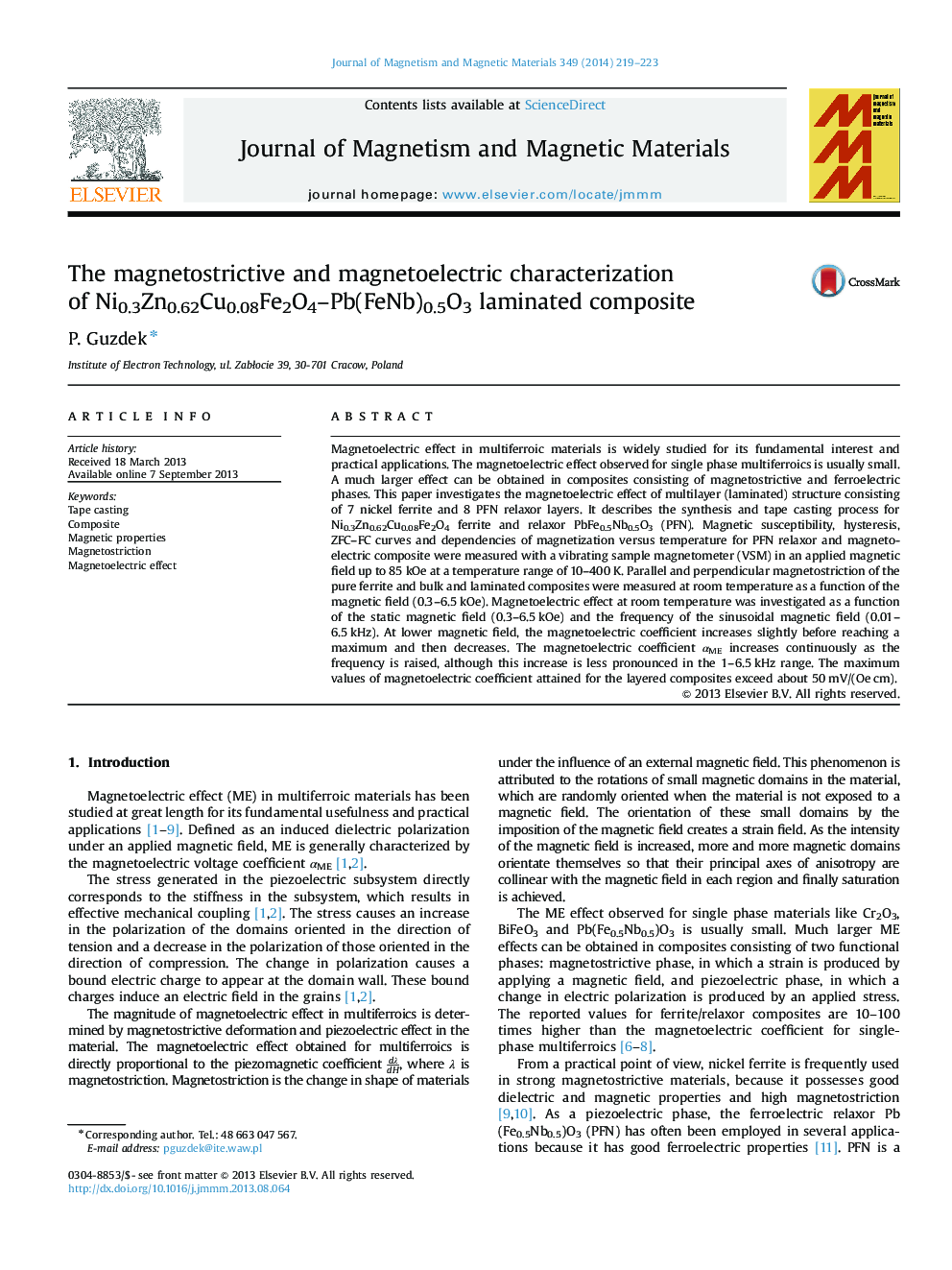| Article ID | Journal | Published Year | Pages | File Type |
|---|---|---|---|---|
| 1799993 | Journal of Magnetism and Magnetic Materials | 2014 | 5 Pages |
Abstract
Magnetoelectric effect in multiferroic materials is widely studied for its fundamental interest and practical applications. The magnetoelectric effect observed for single phase multiferroics is usually small. A much larger effect can be obtained in composites consisting of magnetostrictive and ferroelectric phases. This paper investigates the magnetoelectric effect of multilayer (laminated) structure consisting of 7 nickel ferrite and 8 PFN relaxor layers. It describes the synthesis and tape casting process for Ni0.3Zn0.62Cu0.08Fe2O4 ferrite and relaxor PbFe0.5Nb0.5O3 (PFN). Magnetic susceptibility, hysteresis, ZFC-FC curves and dependencies of magnetization versus temperature for PFN relaxor and magnetoelectric composite were measured with a vibrating sample magnetometer (VSM) in an applied magnetic field up to 85 kOe at a temperature range of 10-400 K. Parallel and perpendicular magnetostriction of the pure ferrite and bulk and laminated composites were measured at room temperature as a function of the magnetic field (0.3-6.5 kOe). Magnetoelectric effect at room temperature was investigated as a function of the static magnetic field (0.3-6.5 kOe) and the frequency of the sinusoidal magnetic field (0.01-6.5 kHz). At lower magnetic field, the magnetoelectric coefficient increases slightly before reaching a maximum and then decreases. The magnetoelectric coefficient αME increases continuously as the frequency is raised, although this increase is less pronounced in the 1-6.5 kHz range. The maximum values of magnetoelectric coefficient attained for the layered composites exceed about 50 mV/(Oe cm).
Related Topics
Physical Sciences and Engineering
Physics and Astronomy
Condensed Matter Physics
Authors
P. Guzdek,
